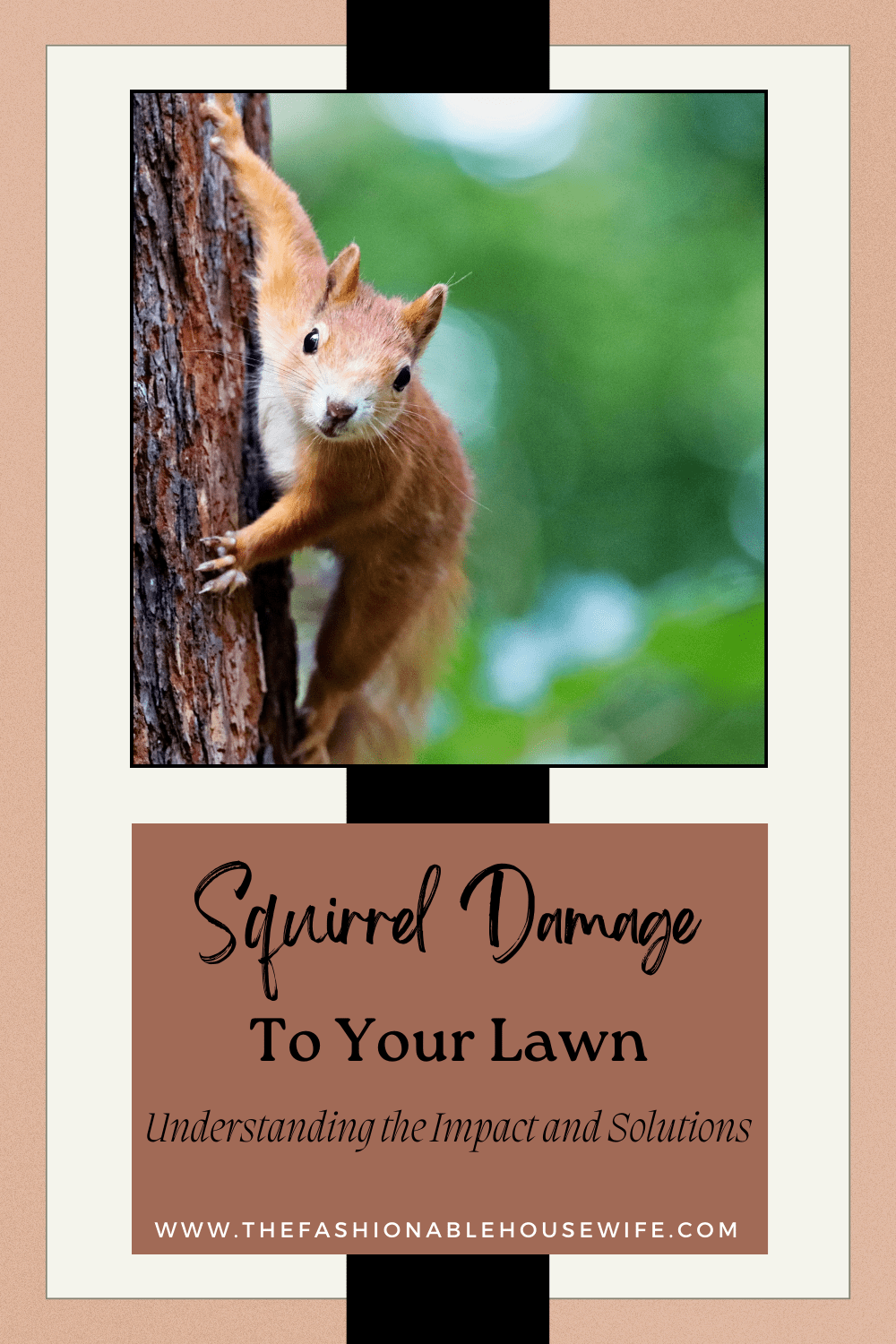Squirrel Damage to Lawn: Understanding the Impact and Solutions
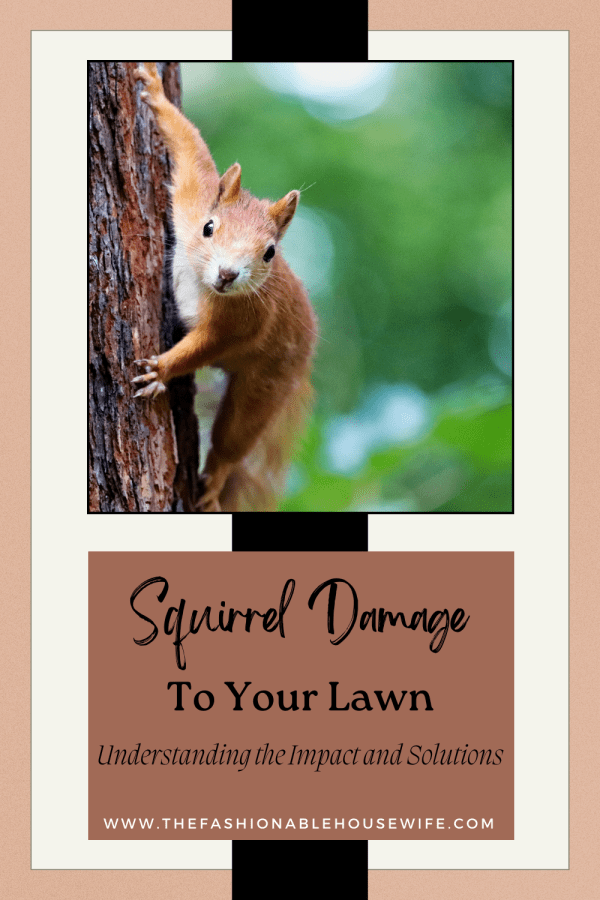
Squirrels can be charming additions to the backyard, but they can also cause significant damage to lawns. Their foraging habits often disturb soil, uprooted plants, and unsightly holes. Many homeowners may not realize the extent of the destruction these small animals can wreak until it’s too late.
Understanding the behavior of squirrels is key to addressing the problems they create. These animals dig for nuts and seeds, disrupting the turf’s and ornamental plants’ health. Identifying early signs of squirrel activity can help in preventing further damage.
Taking proactive measures is essential for lawn care. Effective strategies include landscaping adjustments, fencing, and deterrents to keep squirrels at bay. A proactive approach preserves the lawn and maintains its aesthetic appeal.
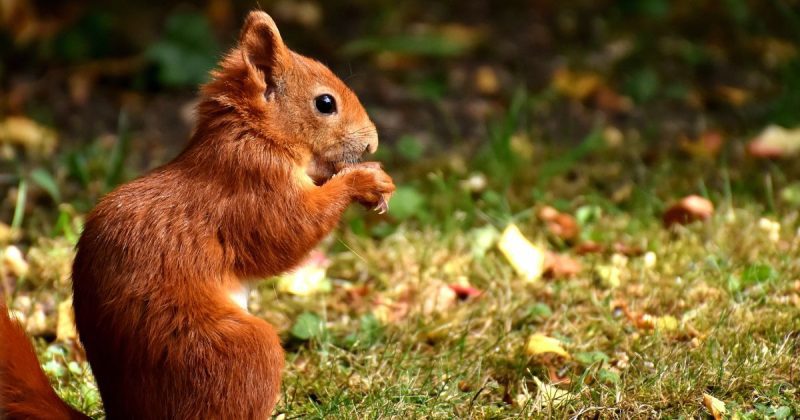
Identifying Squirrel Damage
Squirrels can cause noticeable damage to lawns, making it essential for homeowners to recognize the signs of their activity. Key indicators include disturbances in the grass and small holes, which can lead to further lawn issues if not addressed promptly.
Common Signs of Squirrel Activity
Homeowners can identify squirrel activity through various telltale signs. One common indicator is disturbed patches of grass. Squirrels often dig for nuts or seeds, leading to uneven grass and bare patches.
Another sign is the presence of small holes scattered across the lawn. These holes typically measure 2 to 4 inches in diameter and can appear in clusters.
Squirrels may also leave behind dropped acorns or other food remnants, which can signal frequent visits. Additionally, the noise of squirrels digging or scavenging can signify their presence.
If these signs become persistent and begin to impact the health of your lawn, consulting wildlife control professionals like Critter Stop can be a valuable step. They can help assess the severity of the problem and provide guidance on humane strategies to manage squirrel activity while protecting your property.
Distinguishing Squirrel Holes in Grass
Squirrel holes can be distinctive and often confused with other animals’ creations. Squirrel holes are generally shallow, averaging about 1 to 3 inches deep, compared to the deeper, larger holes made by other burrowing animals.
The edges of squirrel holes tend to be more irregular, while other animal holes may exhibit more uniform shapes. Squirrels do not create extensive tunnel systems, so if holes are present in isolation, they are likely from squirrels.
It’s also relevant to notice the condition of the surrounding grass. Grass around squirrel holes appears uprooted or torn. Observing these differences can help homeowners effectively identify squirrel damage and take corrective action.
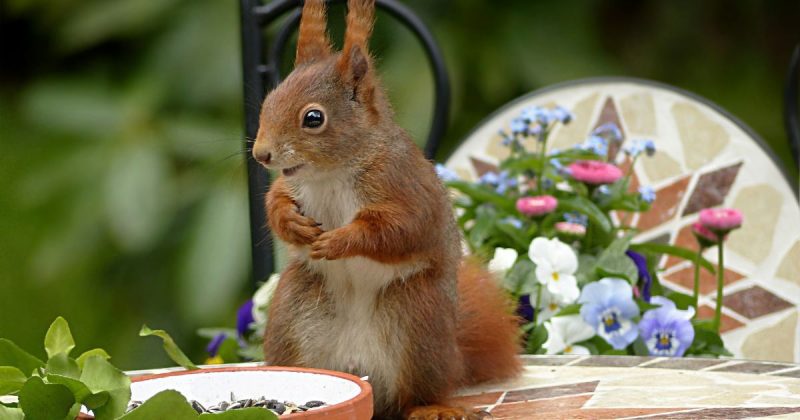
Preventive Measures and Squirrel Proofing
Taking proactive steps can effectively reduce squirrel damage to lawns. Implementing specific yard protection strategies can deter these animals and promote a healthier outdoor space.
Proactive Strategies to Protect Your Lawn
Several strategies can be employed to safeguard lawns from squirrels.
- Fencing: Installing tall fences around the lawn can create a physical barrier. Ensure the fence is at least 4 feet tall and extends underground to prevent burrowing.
- Repellents: Use commercial squirrel repellents or homemade solutions made from strong scents like peppermint or vinegar. Regular application can deter these animals.
- Yard Cleanliness: Keeping the yard clean and free of debris, fallen fruit, and seeds minimizes attractions. Regularly mowing and maintaining the landscape hinders nesting opportunities.
- Plant Selection: Opt for squirrel-resistant plants. Certain plants can be effective, such as flowers with strong scents or varieties that squirrels dislike.
Combining these approaches allows homeowners to create an environment less appealing to squirrels.
Creating a Squirrel-Proof Yard Environment
Modifications can enhance deterrence when building a yard that discourages squirrels.
- Bird Feeders: Use squirrel-proof bird feeders. These feeders have mechanisms that prevent squirrels from accessing seeds, thus reducing their presence.
- Burying Wiring: Burying electrical wiring, garden hoses, or other potential chew items deep underground can help prevent damage.
- Mulch Alternatives: Consider using pine cones or stones instead of traditional mulch. These materials can make digging uncomfortable for squirrels.
- Tree Management: Trim branches that overhang the lawn; squirrels often use trees as launch pads. Maintain a distance of at least 6-8 feet between branches and the roofline.
By applying these changes, homeowners can significantly decrease the likelihood of squirrel-related lawn damage.
Professional Interventions and Solutions
Addressing squirrel damage effectively may require professional help, especially when the problem escalates. Knowing when to seek assistance can help preserve a lawn’s health.
When to Seek Professional Squirrel Removal
Professional assistance is essential when squirrel activity becomes overwhelming. Signs include:
- Extensive Lawn Damage: If squirrels burrow extensively, compromising grass roots.
- Recurrent Problems: Continuous damage season after season.
- Health Risks: Squirrels can carry diseases that pose health risks to pets and people.
Professionals can evaluate the specific situation, identifying whether the damage is extensive or localized. They possess specialized tools and techniques to manage the problem effectively.
In cases where DIY methods fail or the infestation grows, seeking help from wildlife control services like Critter Stop is advisable. These experts implement humane squirrel removal strategies, reducing damage while ensuring the lawn’s and surrounding wildlife’s safety.
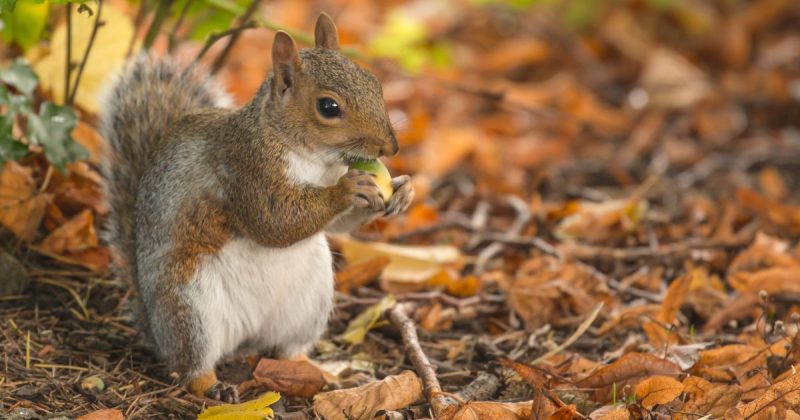
Frequently Asked Questions
Squirrels can create various issues in lawns, leading to concerns for homeowners. Addressing these questions helps manage and understand the impact of squirrel activity on lawns.
How can I repair squirrel holes in my yard?
To repair squirrel holes, first remove any debris. Use a mix of topsoil and compost to fill the holes and, then, pack it down for firm stability. Reseed the area if necessary to encourage grass regrowth.
What methods deter squirrels from digging up lawns?
Using a combination of repellents, such as cayenne pepper or commercial sprays, can deter squirrels. Physical barriers, like fences or netting, may also prevent access to certain lawn areas.
What are effective treatments for squirrel damage in lawns?
To treat squirrel damage, replant any displaced grass and fill holes with soil. Applying lawn fertilizers can promote healthy grass growth, helping the lawn recover more quickly.
Why are squirrels digging holes in my lawn?
Their main reason for digging holes is to search for food. They may also dig to store nuts or create nests, especially if a food source is nearby.
How can I distinguish between squirrel and rat holes in my lawn?
Squirrel holes are larger, about 3-4 inches wide, and have a more irregular shape. In contrast, rat holes are typically smaller, around 1-2 inches wide, and have smoother edges.
Can squirrels cause damage to lawns during nighttime hours?
Squirrels are mostly found during the daytime. However, if food sources are scarce, they may occasionally forage at night, leading to potential lawn damage.
Safeguard your home with trusted squirrel removal services from Critter Stop. Contact them at 214-380-1667 for quality, 5-star-rated solutions. Protect your lawn and property with their professional expertise today.

